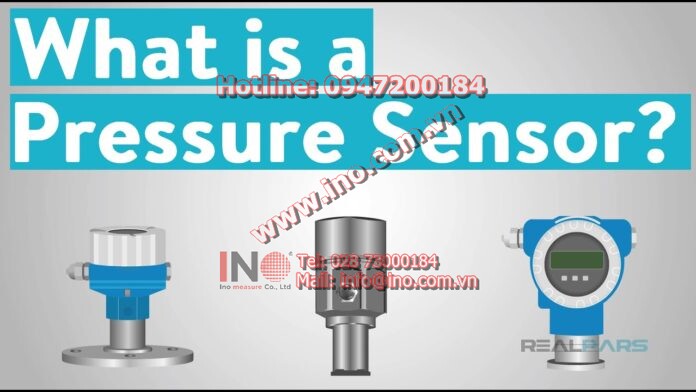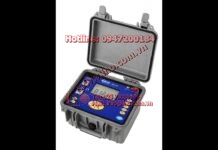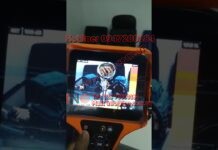What is a Pressure Sensor?
Các câu hỏi, thắc mắc, thông tin liên quan đến sản phẩm được giới thiệu trong video dưới đây từ khâu mua sắm, lựa chọn, sử dụng, cài đặt hay thay thế, vui lòng liên hệ với INO Team để được hỗ trợ và tư vấn kịp thời.
– – – LƯU Ý – – -: Với những thiết bị không được liệt kê ở đây không có nghĩa là chúng tôi không hỗ trợ được bạn, công ty chúng tôi chuyên đề xuất giải pháp, tư vấn mua sắm và cung cấp thiết bị về cảm biến công nghiệp, đo lường và tự động hoá cho các công ty trong và ngoài nước.
Công ty TNHH Giải pháp và Công nghệ Đo lường INO, nhà cung cấp các thiết bị đo lường và tự động hóa công nghiệp.
Today, we will hopefully cover all of the questions you may have about pressure sensors.
To understand pressure sensors, first, you need to understand the pressure. Pressure is an expression of force exerted on a surface per unit area.
We commonly measure the pressure of liquids, air, and other gases, amongst other things. The standard unit for pressure is the “Pascal”. This is equivalent to one “Newton per meter squared”.
A pressure sensor simply monitors this pressure and can display it in one of the several units known around the world. This is commonly the “Pascal”, “Bar”, and “PSI” or pounds per square inch in the United States.
The pressure of the air in your tire is a great example of pressure and how it is measured. As we air the tire up, the force it exerts on the tire increases, causing the tire to inflate. This is monitored with a pressure sensor inside the tire on newer vehicles.
So how does a pressure sensor work?
In a nutshell, it converts the pressure to a small electrical signal that is transmitted and displayed.
These are also commonly called pressure transmitters because of this. Two common signals that are used is a 4 to 20 milliamps signal and a 0 to 5 Volts signal.
Most pressure sensors work off of the piezoelectric effect. This is when a material creates an electric charge in response to stress.
This stress is usually pressure but can be twisting, bending, or vibrations. The pressure sensor detects the pressure and can determine the amount of pressure by measuring the electric charge.
Pressure sensors need to be calibrated so it knows what voltage or milliamp signal corresponds to what pressure. This is a basic “Zero” and “Span” calibration or minimum and maximum which is a common job for maintenance personnel.
In the RealPars video “What is Sensor Calibration and Why is it Important?” we described the sensor calibration in detail.
What are some of the common types of pressure that you can measure with a pressure sensor?
There are three common types that we use in the industry. First being “Gauge Pressure”.
This is measured in reference to atmospheric pressure which is typically 14.7 PSI. You will show a “positive” pressure when it is above atmospheric pressure and a “negative” when it is below atmospheric pressure.
The next type is “Absolute Pressure”. Simply put, this is the pressure as measured against absolute vacuum. A full vacuum will have an absolute pressure of 0 PSIa and increase from there.
If you need to read a pressure that is lower than atmospheric pressure, this is the type of sensor you would use.
The last type that is commonly monitored in the industry is “Differential pressure”.
This is exactly what it sounds like, the difference between two pressures, a pressure being measured and a reference pressure.
In industry, pressure sensors are used for a wide variety of processes. Some common uses are to measure the pressure of steam.
Steam is commonly used to heat many processes in manufacturing facilities. This pressure sensor on the steam system can serve multiple purposes though. First and most obvious is to observe and monitor the pressure.
Another purpose is to control when and where steam can flow and regulate its pressure. Steam can build up pressure in a vessel and become dangerous.
We can use the pressure sensor as an input device to open and close a control valve to keep the pressure and steam flow regulated. This only requires simple programming in the PLC to achieve this.
Pressure sensors are also installed next to filters in many industrial processes. If the filter begins to clog, the flow will decrease. As the flow of the liquid decreases, pressure can increase or decrease depending on which side of the filter is monitored.
#RealPars #PressureSensor #Sensor
Web: www.ino.com.vn | Mail: info@ino.com.vn
Tel: (+84) 028 73000184 | Hotline: 0947200184
Website: http://www.ino.com.vn Website: http://www.ino.vn
Please visit INO YouTube Channel for more Video
https://www.youtube.com/inomeasure




















